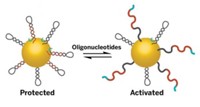Advertisement
Grab your lab coat. Let's get started
Welcome!
Welcome!
Create an account below to get 6 C&EN articles per month, receive newsletters and more - all free.
It seems this is your first time logging in online. Please enter the following information to continue.
As an ACS member you automatically get access to this site. All we need is few more details to create your reading experience.
Not you? Sign in with a different account.
Not you? Sign in with a different account.
ERROR 1
ERROR 1
ERROR 2
ERROR 2
ERROR 2
ERROR 2
ERROR 2
Password and Confirm password must match.
If you have an ACS member number, please enter it here so we can link this account to your membership. (optional)
ERROR 2
ACS values your privacy. By submitting your information, you are gaining access to C&EN and subscribing to our weekly newsletter. We use the information you provide to make your reading experience better, and we will never sell your data to third party members.
Materials
Rules For Design
Materials Science: Guidelines predict structures formed by nanoparticles and DNA linkers
by Celia Henry Arnaud
October 17, 2011
| A version of this story appeared in
Volume 89, Issue 42

A new set of rules does for nanoparticle lattices what Linus Pauling’s rules did for atomic crystal lattices—it explains which structures will be the most stable. But the design rules developed by Chad A. Mirkin and coworkers at Northwestern University and Argonne National Laboratory go a step further than Pauling’s rules: They allow researchers to tune materials’ properties rather than just predict them (Science, DOI: 10.1126/science.1210493). Such designed materials have many applications, including optics, catalysis, and separations.
The Six Rules
When all DNA-nanoparticles (DNA-NPs) in a system have equal hydrodynamic radii, each NP in the thermodynamic product will maximize the number of nearest neighbors to which it can form DNA connections.
Kinetic products can be formed by slowing the dehybridization/rehybridization rate of DNA linkers.
The overall hydrodynamic radius of a DNA-NP dictates its assembly and packing behavior.
In binary systems, the particle size ratio and DNA linker ratio between two particles dictate the thermodynamic structure.
Systems with the same size ratio and DNA linker ratio will form the same thermodynamic product.
The most stable structure will maximize all possible types of DNA sequence-specific hybridization interactions.
Mirkin and coworkers use DNA-decorated gold nanoparticles that assemble into periodic lattices via hybridization between DNA strands on adjacent particles. The researchers now report that the resulting structures are governed by a set of six rules involving nanoparticle size and DNA length and sequence.
The six rules actually boil down to one overarching rule, from which the others flow naturally. The principal rule “is very simple,” Mirkin says: “The structure that maximizes the number of hybridization links will be the structure that’s thermodynamically favored.”
The lattice structures and their properties depend on the overall size of the particles plus the linkers (the total hydrodynamic radius), not on the sizes of the particles or linkers individually. By changing the size of a particle or length of a linker relative to one another, the team can tailor lattice properties such as interparticle distances on length scales of 25 to 150 nm. They designed 41 crystals, each of which assembled into one of nine lattice structures, and characterized them using synchrotron-based small-angle X-ray scattering at Argonne.
“In normal chemistry, we can’t do this—we can’t change the size of atoms,” Mirkin says. “But with these types of nanoscale ‘atoms,’ we can adjust their size, their recognition properties, their valency, and therefore the types of structures we can make in a much more straightforward manner.”
The Northwestern team used their design rules to make a variety of structures with gold nanoparticles, but the rules should work with any type of nanoparticle to which DNA can be attached, Mirkin says.
The one drawback is that the structures currently exist only in solution, Mirkin notes. “They collapse in the solid state,” he says. “Moving these to the solid state will be a challenge.”
The Northwestern-Argonne team “has provided a new handbook for the engineering of nanoparticle-DNA hybrids,” says Christopher B. Murray, a nanomaterials expert at the University of Pennsylvania. “This is the realization of true programmable matter, and Mirkin and coworkers have shared the source code with the rest of the research community.” These design guidelines “advance significantly what was already a very hot area for soft nanomaterials design,” he notes.




Join the conversation
Contact the reporter
Submit a Letter to the Editor for publication
Engage with us on Twitter